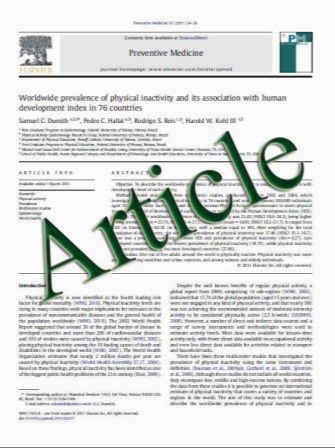Thrombin generation in patients with a bleeding tendency of unknown origin
- نوع فایل : کتاب
- زبان : انگلیسی
- مؤلف : Cihan Ay & Johanna Haselböck & Clarissa Laczkovics & Silvia Koder & Ingrid Pabinger
- چاپ و سال / کشور: 2011
Description
There are a number of persons with a mild to moderate bleeding tendency, in whom no underlying bleeding disorder can be detected despite thorough investigation of all known heritable and acquired haemostatic abnormalities. Thrombin is the central enzyme in the coagulation cascade, which is important for sufficient haemostasis. The measurement of an individual's potential to generate thrombin has been proposed for estimating the individual coagulation potential and predicting a hyper- or hypo-coagulable phenotype. The aim of our study was to investigate in vivo thrombin generation in a case-control study of patients with a bleeding tendency of unknown origin and in age- and sex-matched healthy individuals. Bleeding tendency was classified according to a standardized bleeding score. Thrombin generation was measured with a commercially available assay (Technothrombin- TGA, Technoclone, Vienna, Austria). In total, 101 patients (76 female; median age [25th–75th percentile], 44 [35–60] years) and 102 controls (67 women; median age, 47 [38– 55] years) were enrolled. The distribution of parameters of thrombin generation among patients and controls showed no statistically significant difference: lag phase (14.4 [11.1– 18.1] vs. 14.1 [12.1–17.1] min, p=0.720), peak thrombin (179.8 [135.6–242.6] vs. 175.1 [143.1–261.4] nM, p=0.576), time to peak thrombin (23.6 [18.1–28.6] vs. 22.6 [18.6–27.1] min, p=0.790), velocity index (19.7 [13.0–39.0] vs. 22.6 [14.5–36.5] nM/min, p=0.233) and area under the thrombin generation curve (3,491 [3,069– 3,880] vs. 3,414 [3,045–3,750] nM thrombin, p=0.673). In conclusion, the thrombin generation potential in patients with a bleeding tendency of unknown origin was not different from that of healthy individuals.
Received: 1 February 2011 / Accepted: 14 February 2011 / Published online: 26 February 2011


